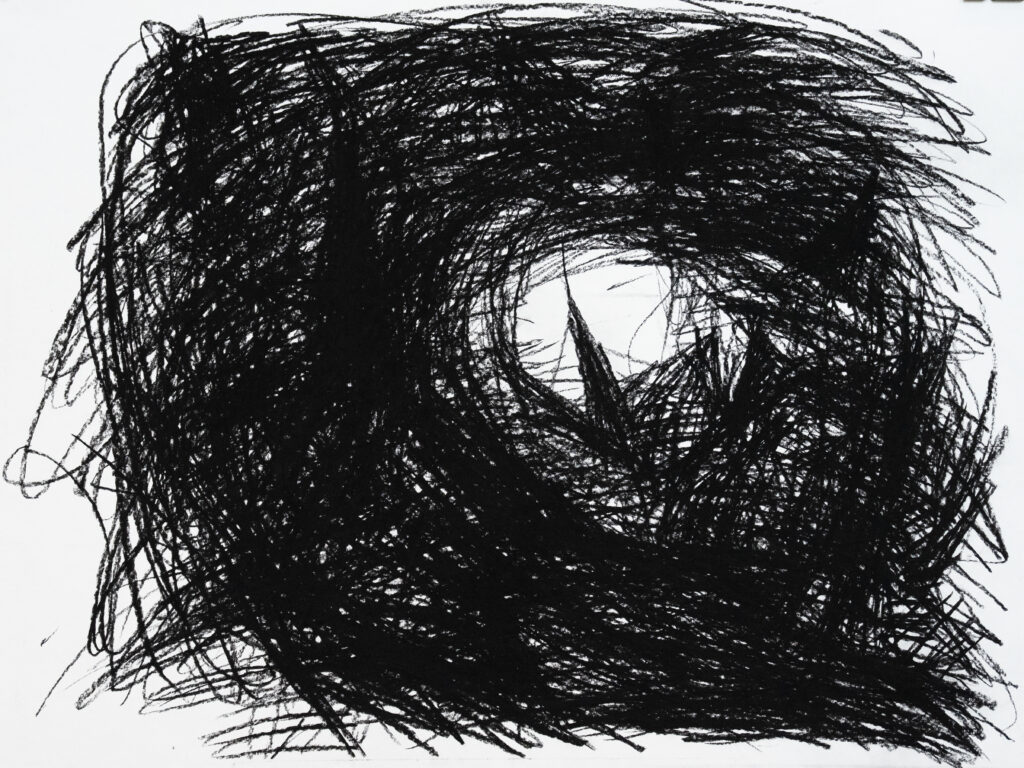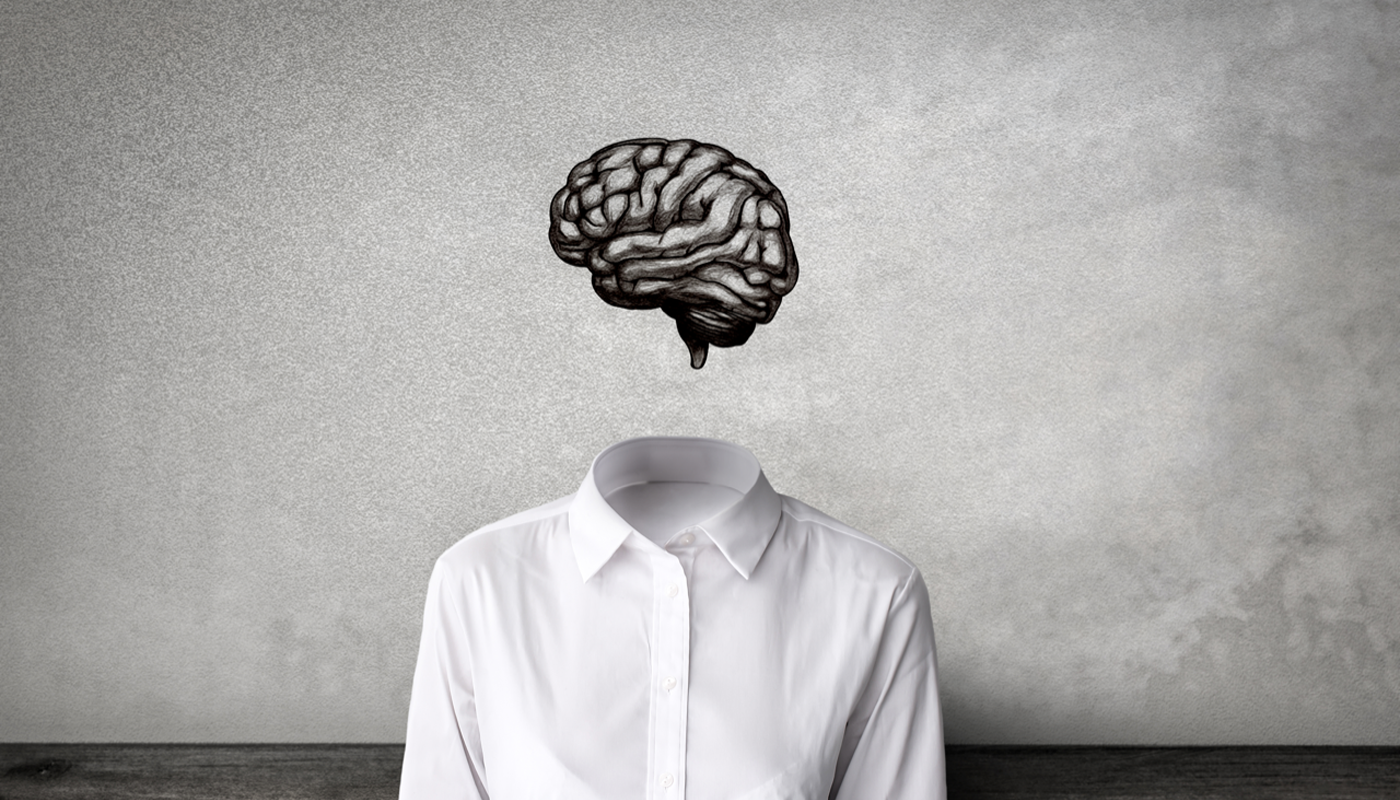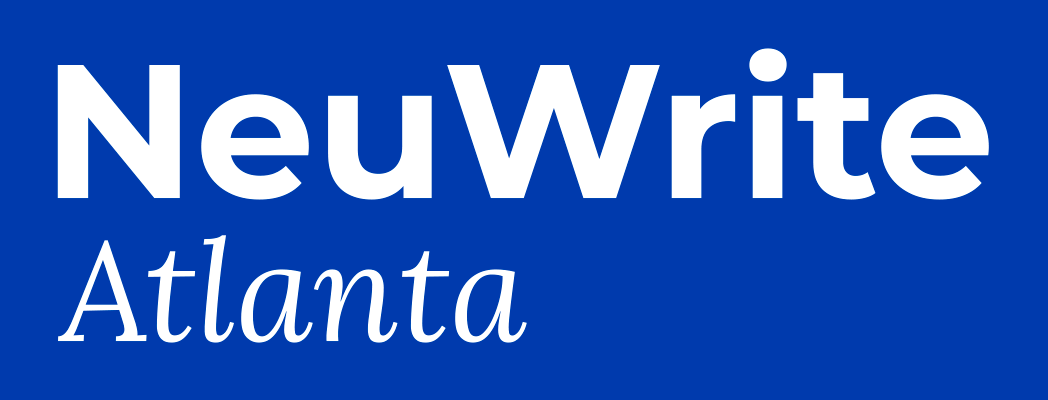Artist: Hannah Lichtenstein
Graduate Student, Neuroscience, Georgia State University
@HDLart_ https://www.instagram.com/hdlart_/
Artist Statement:
I have been studying neuroscience for over 5 years now, and my renderings of my NeuroArt are inspired by my experience with microscopy, the myriad of textbooks I have read and studied from, and what I visualize in my own mind when I picture the cells and connections that I study in the lab. While these neurons and glia are invisible to the naked eye, the visualization of these cells are made possible by advanced immunohistochemical techniques and fluorescent reporters, which we can view using microscopy. My NeuroArt is made to show viewers the beauty of the brain and how I imagine these circuits. While I am predominately a painter, I have also created 3D pieces and sculptures in the past and plan to continue to challenge myself with new artistic methods and techniques as I grow as an artist and neuroscientist.

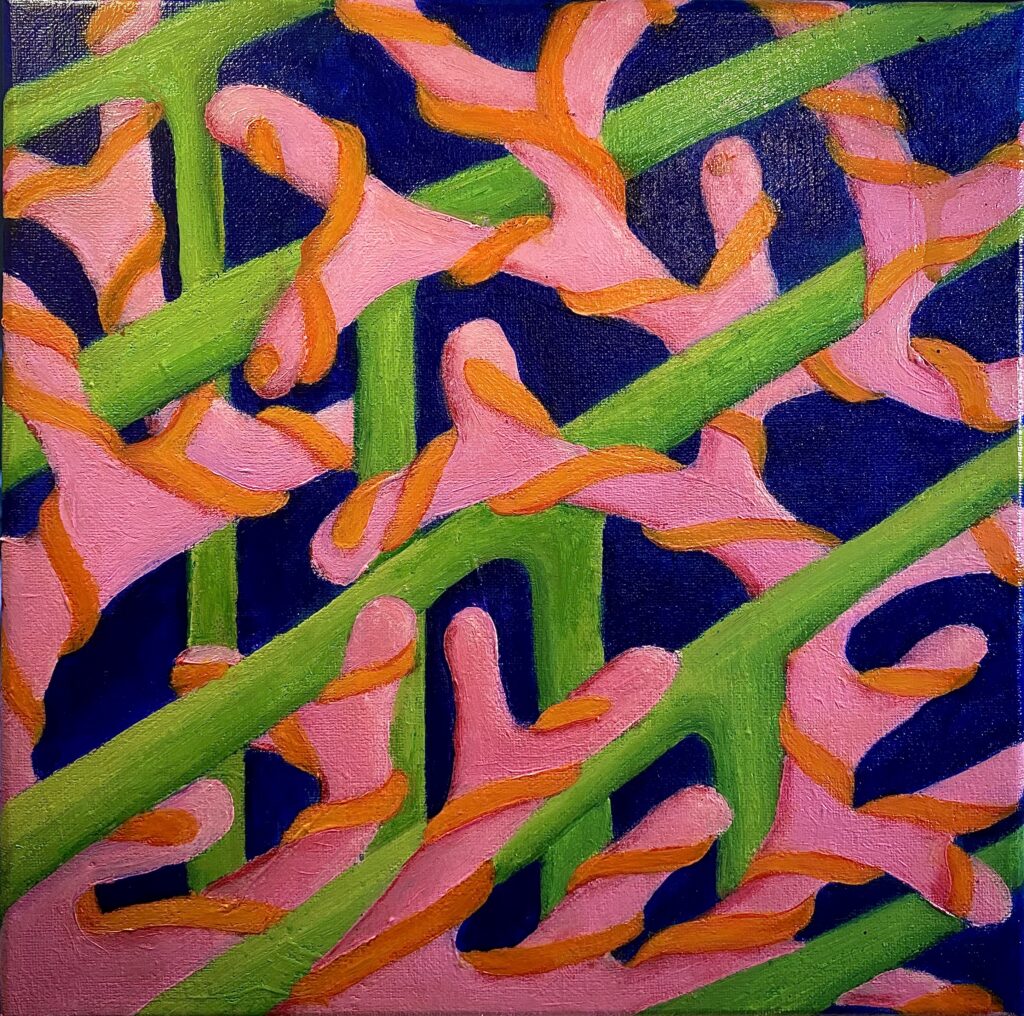
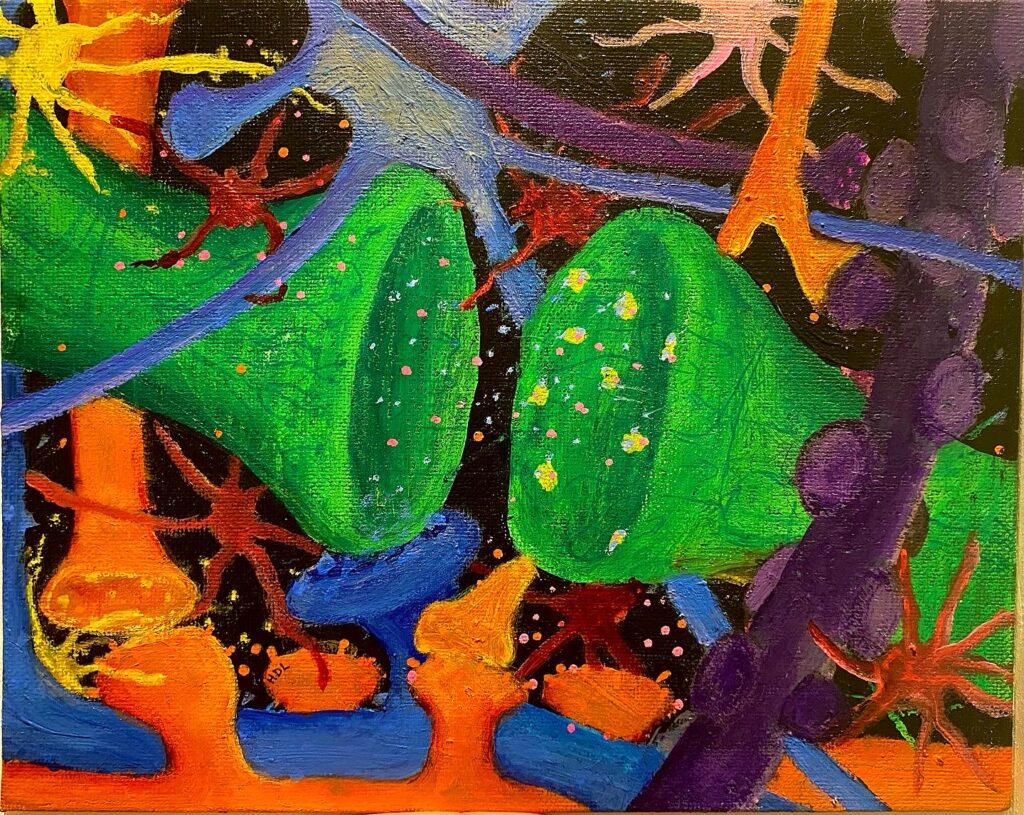
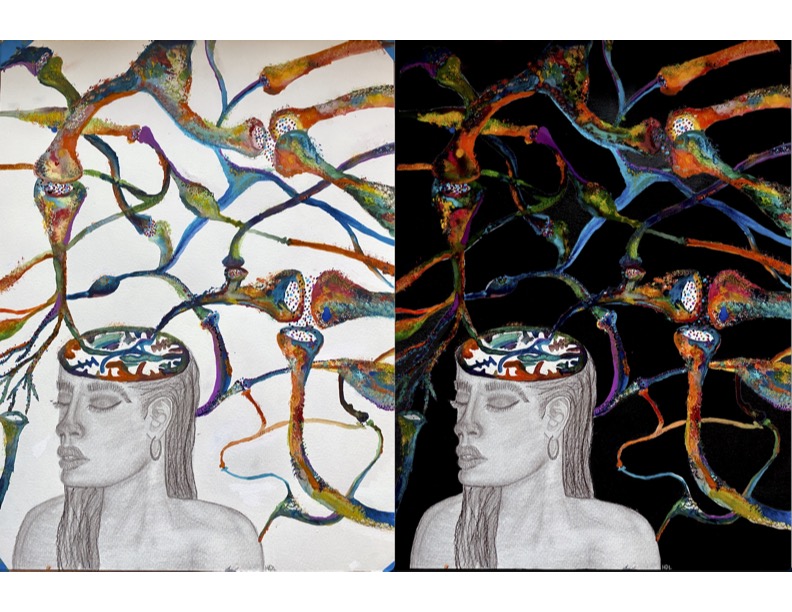
Artist: Adam Sprague
Undergraduate Student, Drawing, Painting, & Printmaking BFA, Georgia State University
@spreggo – instagram.com/spreggo
Artist Statement:
Referencing fMRI images of my own brain, these works explore the spaces between neurobiology and lived experience. By engaging and connecting ideas laterally, e.g. conflating psychology’s “need for cognitive closure” with the visual gestalt principle of closure, inverting the hierarchy of the conscious and dreaming mind, or fusing the biology of vision with the experience of seeing, my hope is to discover new relationships that help to bridge these gaps. Giving personal, human perspective the same weight as scientific, biology-based knowledge may be a compassionate path forward in undoing the perceived dichotomy between the two, without subjugating or erasing one in favor of the other. Art-making allows for free exploration of this space, unburdened by technical correctness, and generates new, unexpected ideas, paradigms, and experiences. These works should not be seen as illustrations so much as cognitive spaces in motion, containing shifting layers of conceptual and emotional responses, memories, and patterns.
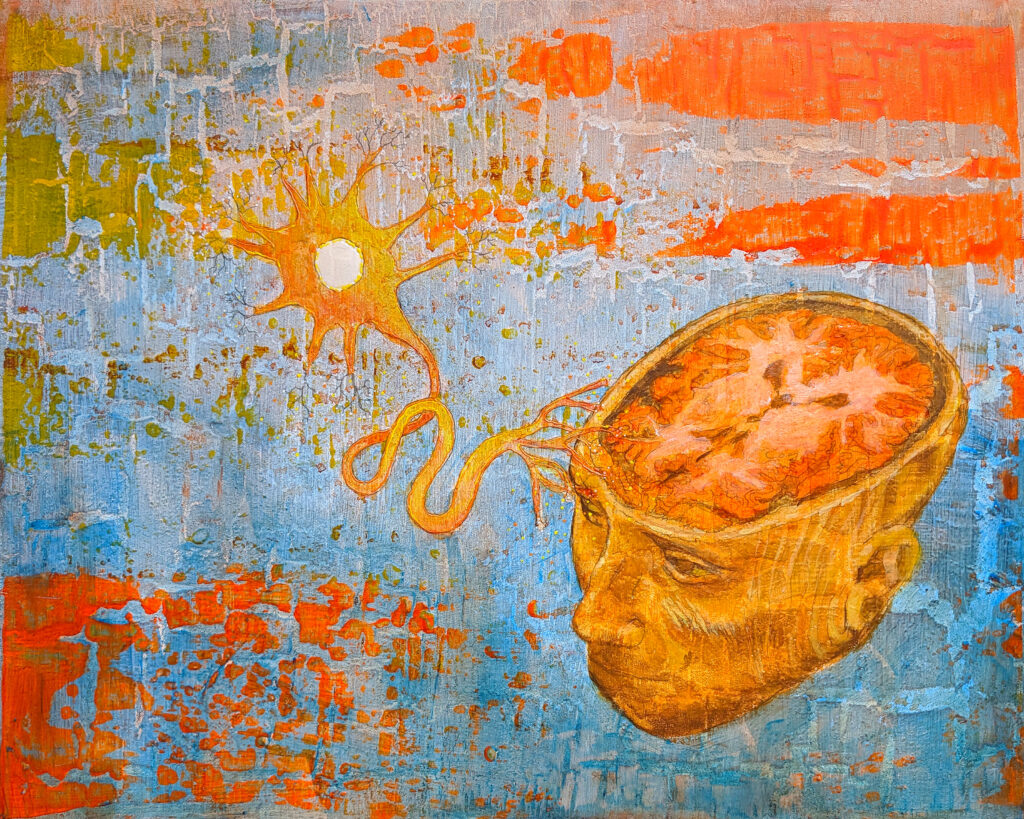
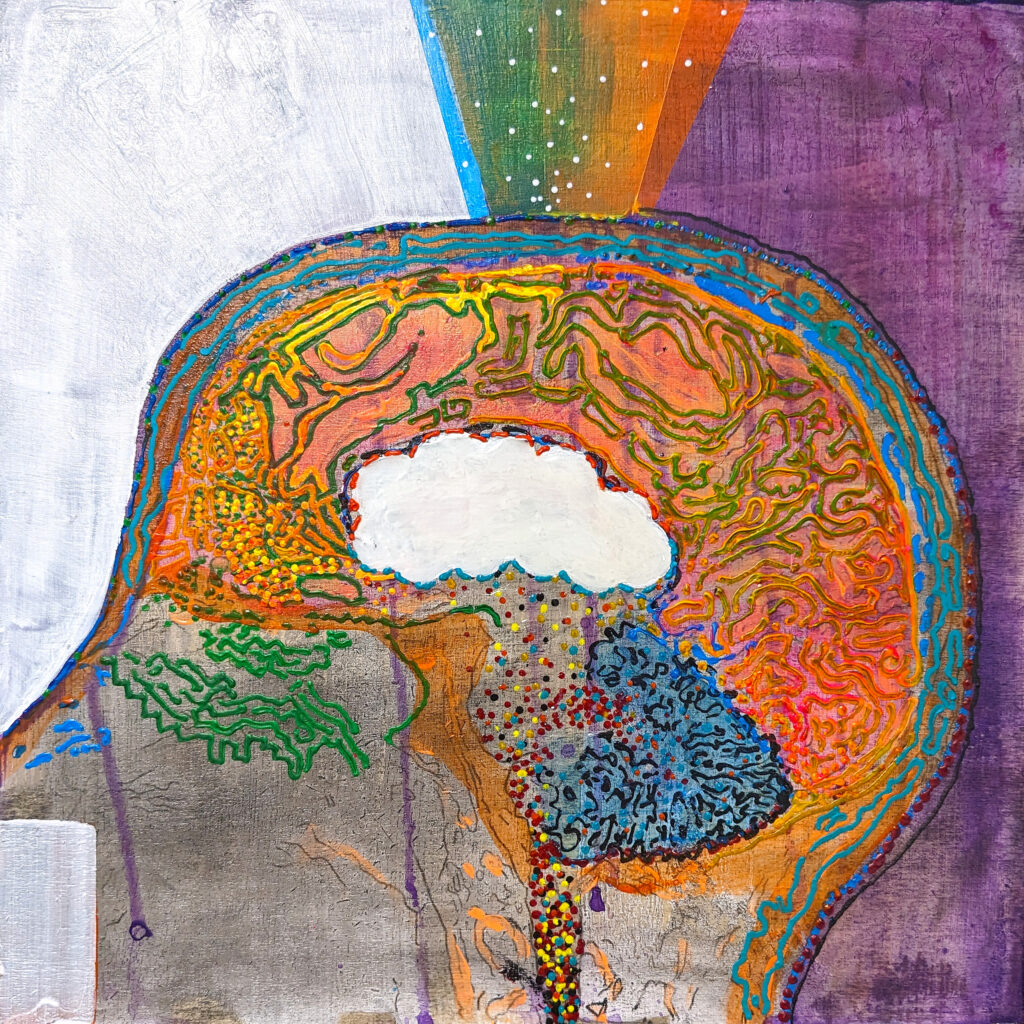
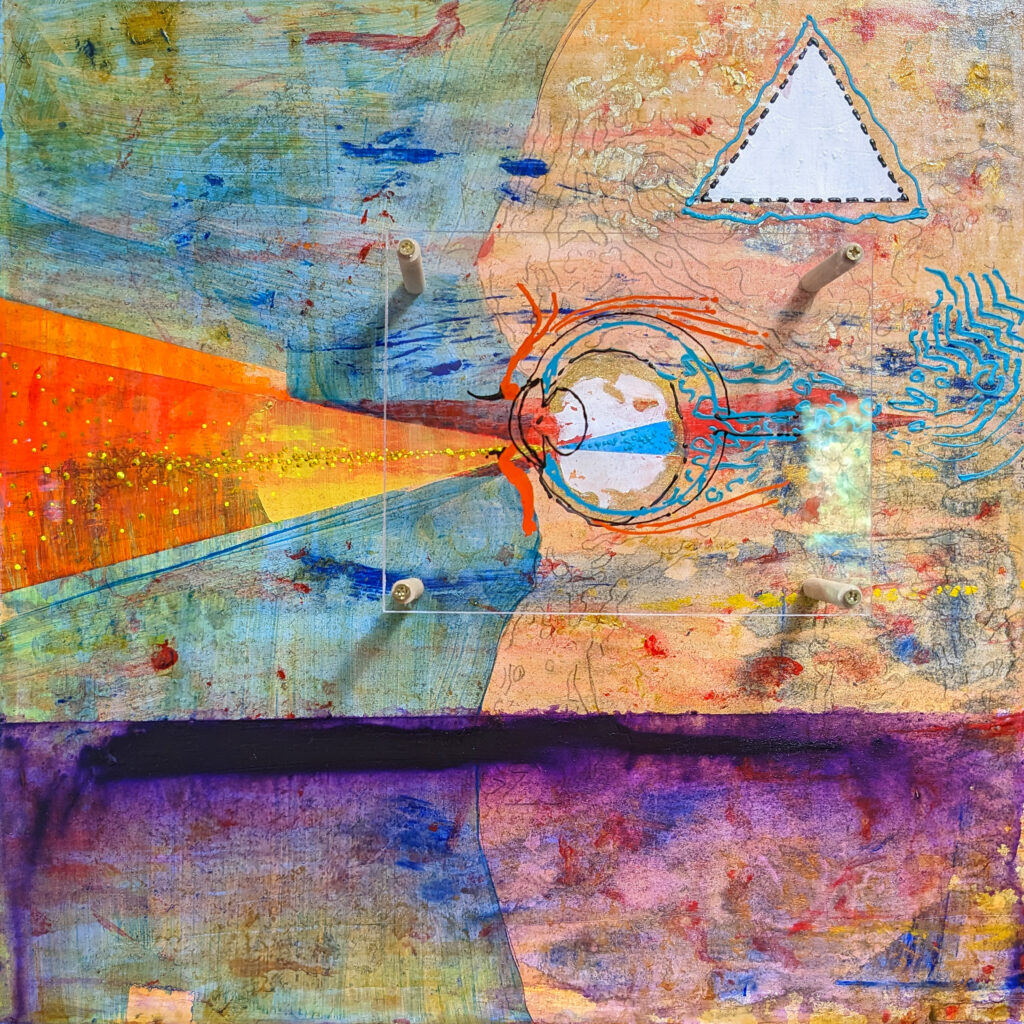
Artist: Adam Winnie, the Target and Tim Flowers, The Result
Adam Winnie, MFA Graduate
Tim Flowers, Senior Lecturer
Craig Dongoski, Associate Professor
Welch School of Art, Georgia State University
Presented at the 2023 Brains & Behavior Retreat: Drawing Voices: Mental Radio performance Directed by Craig Dongoski
